A few more shots of Koumbi Salah to wrap up.








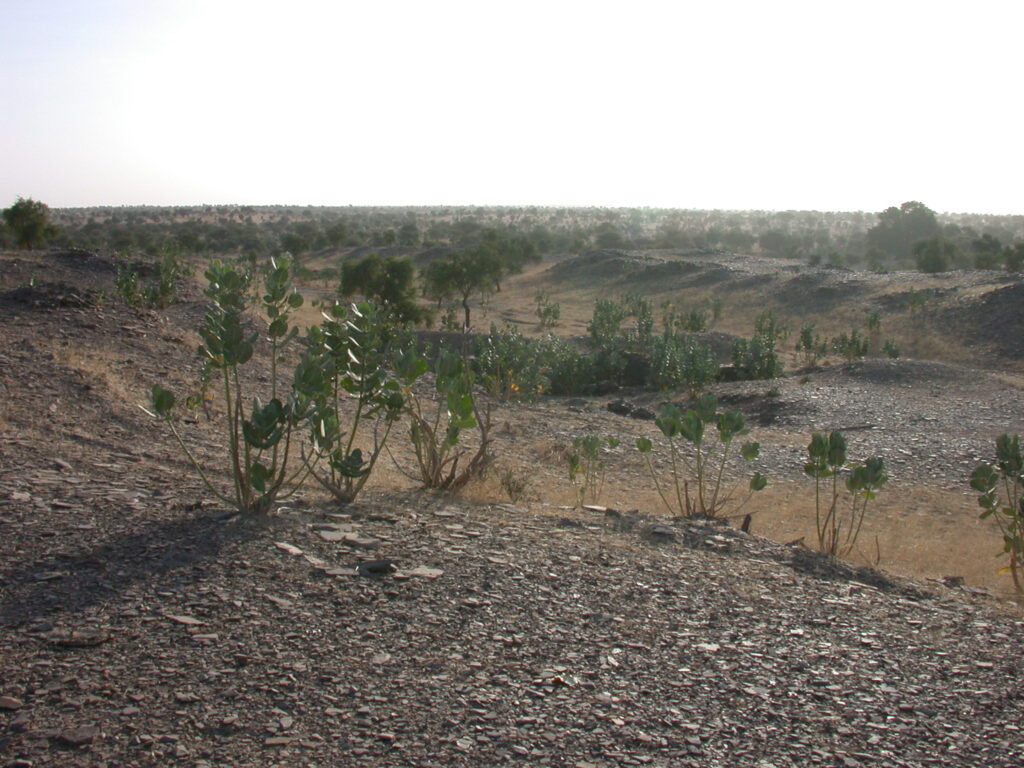
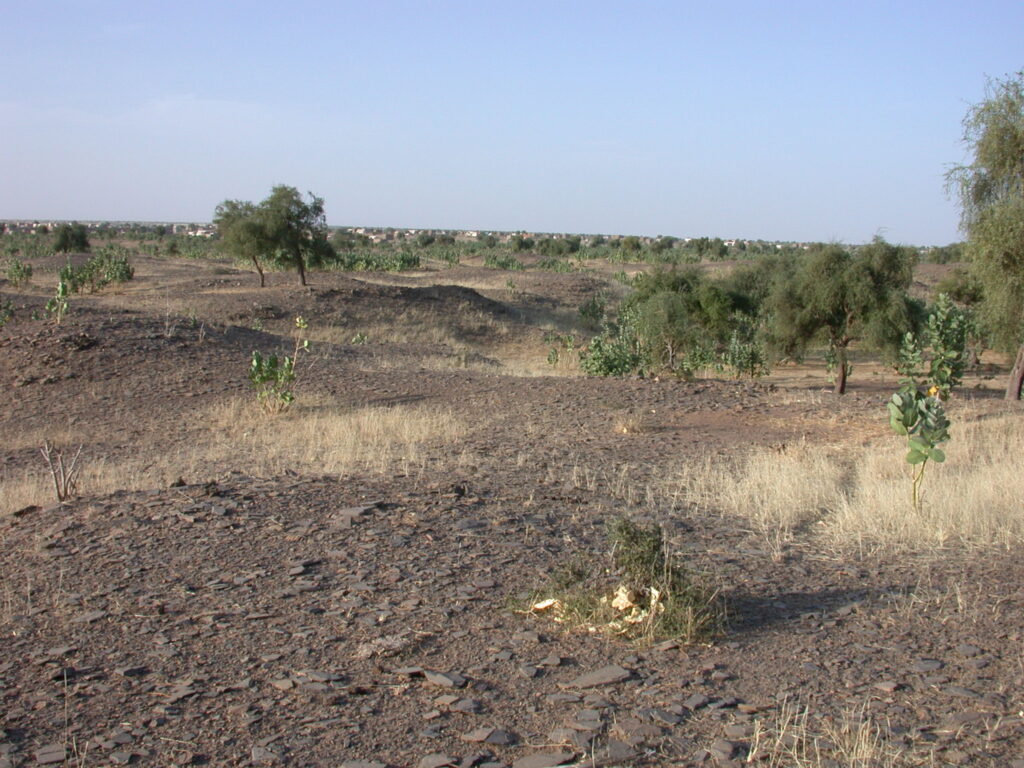


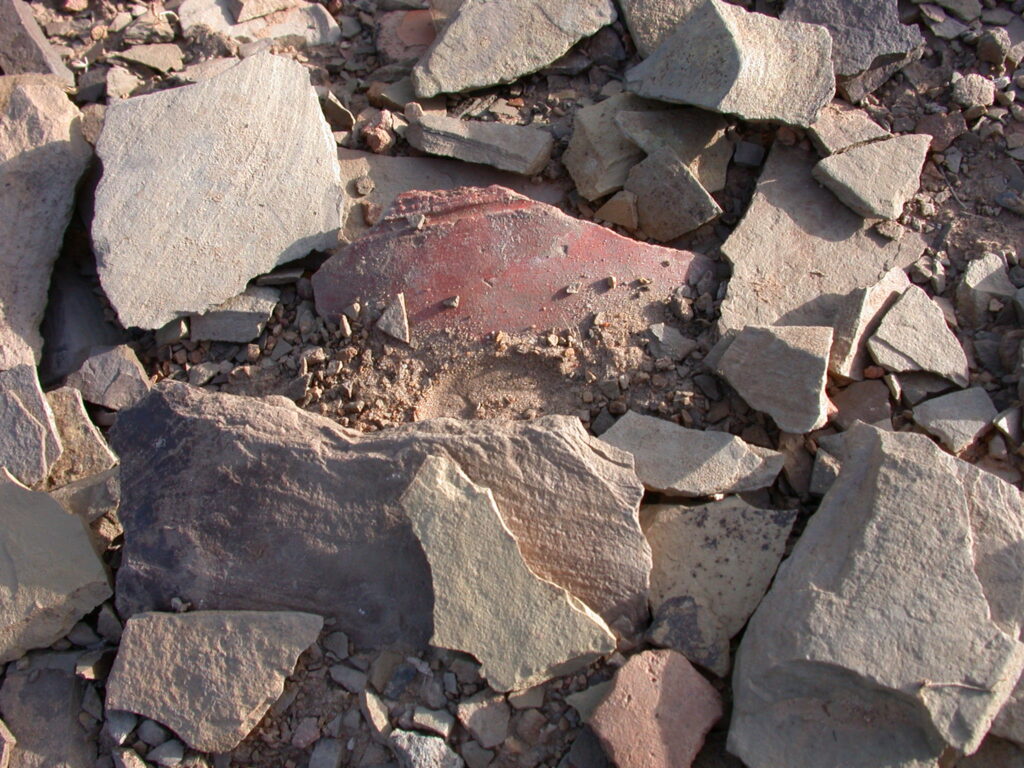

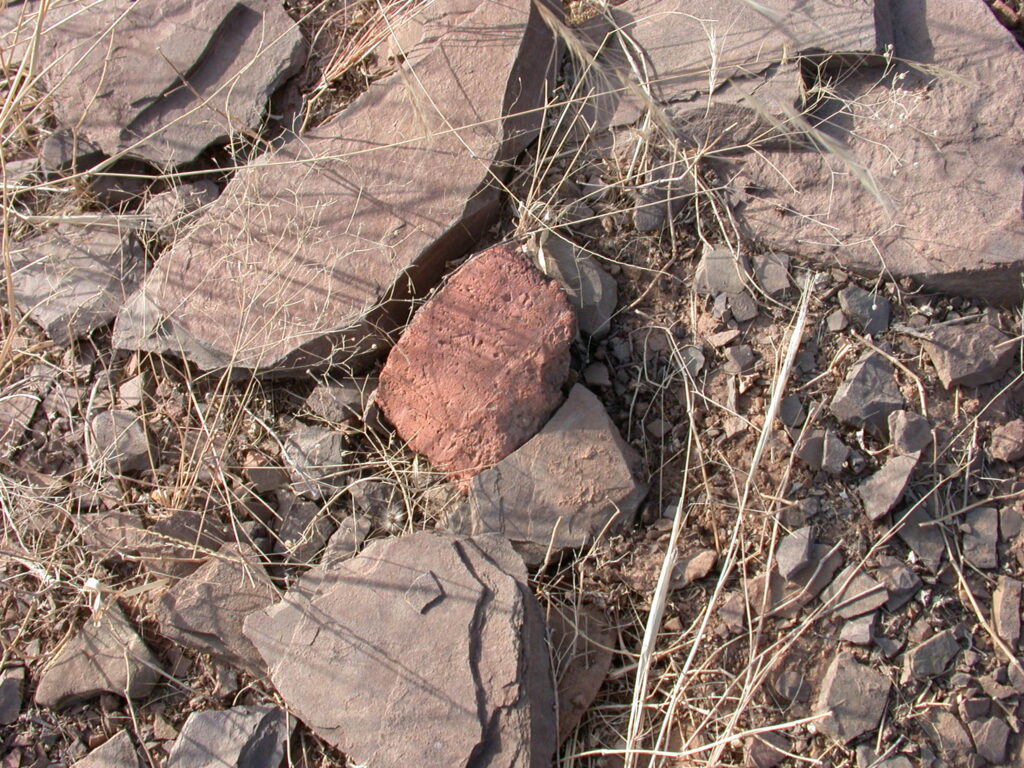






I had just over an hour to tour the site of the ancient city of Koumbi Salah. I left my orange bag sitting in the ruins to mark the place where we would meet.


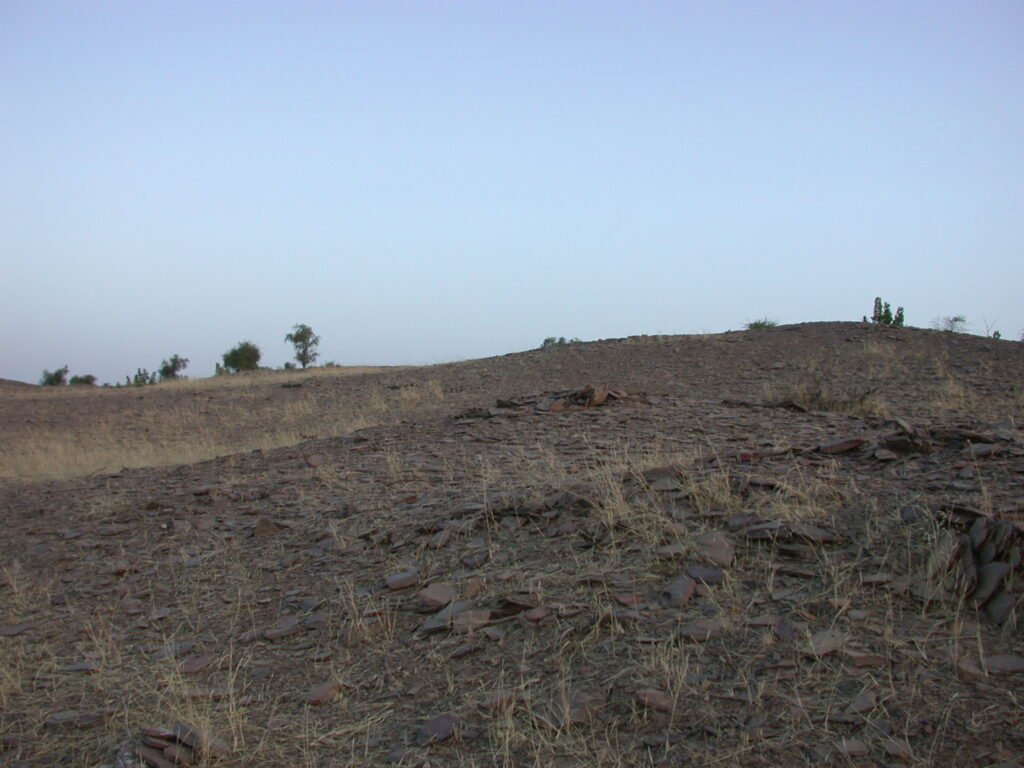




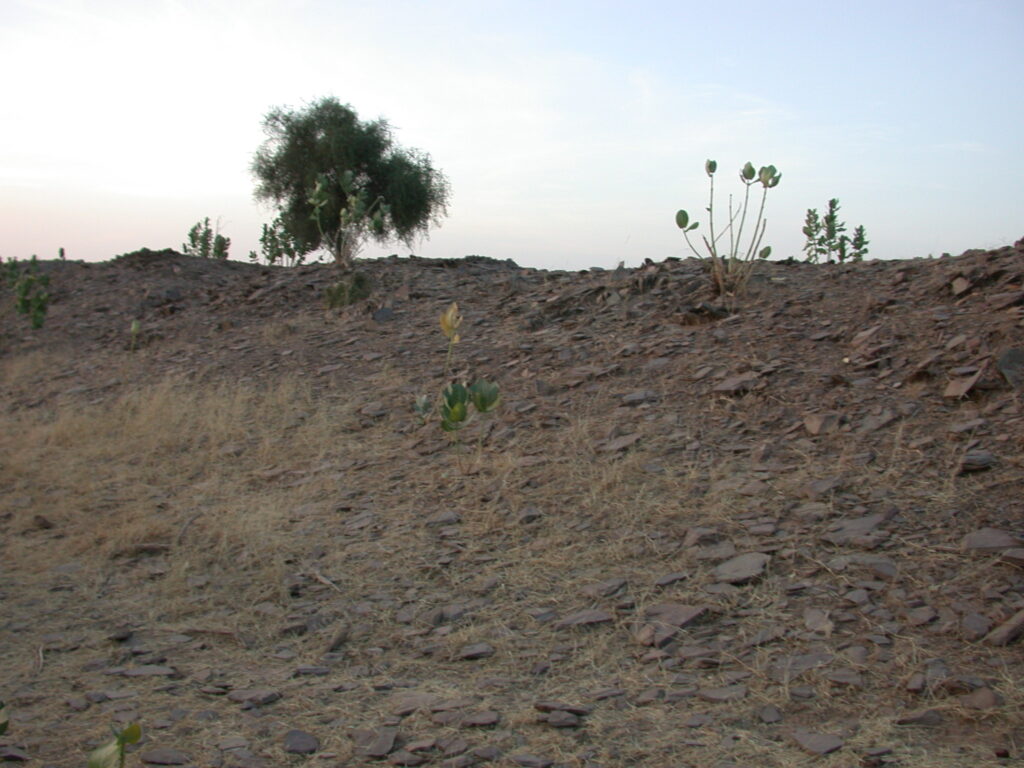













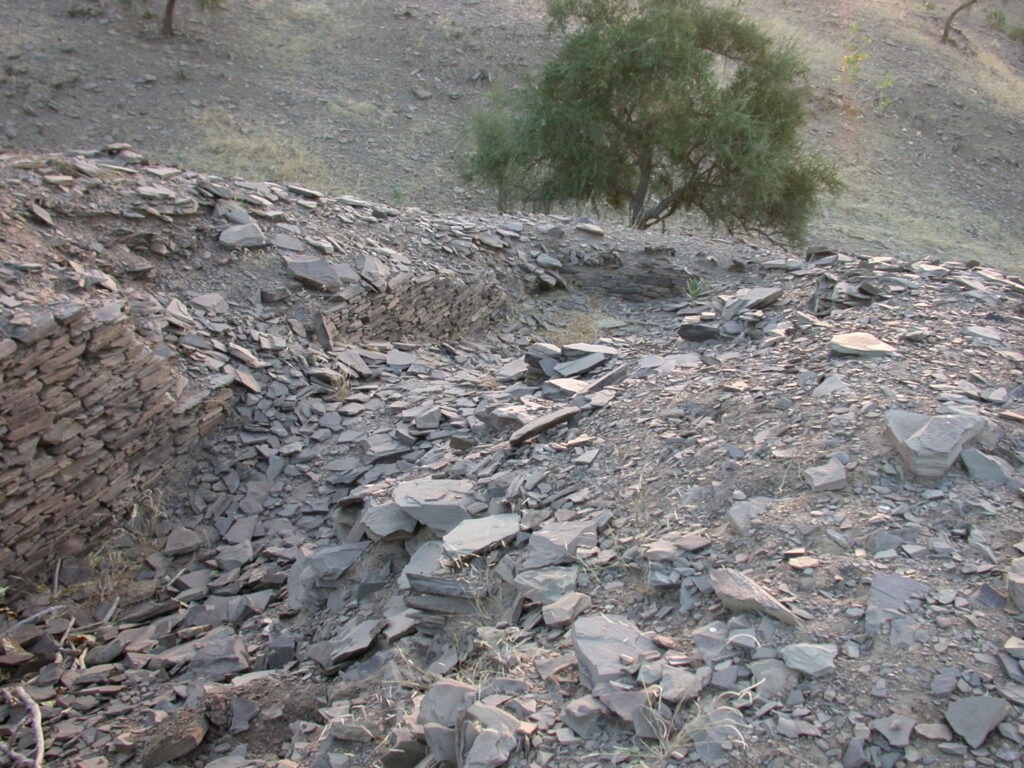




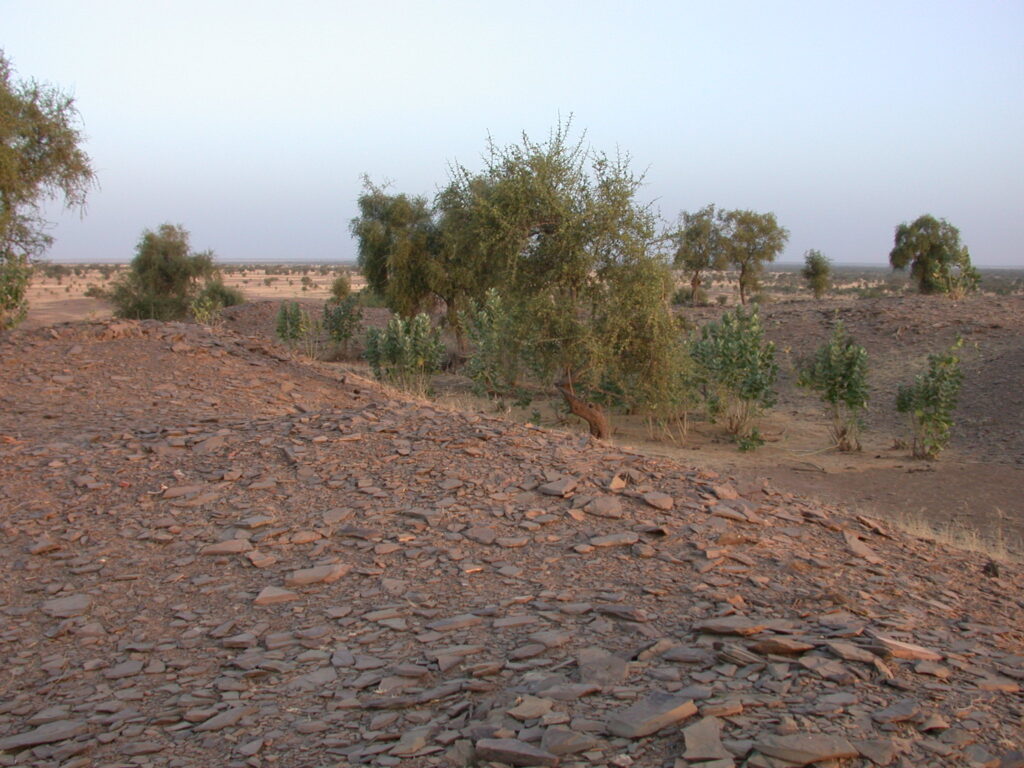








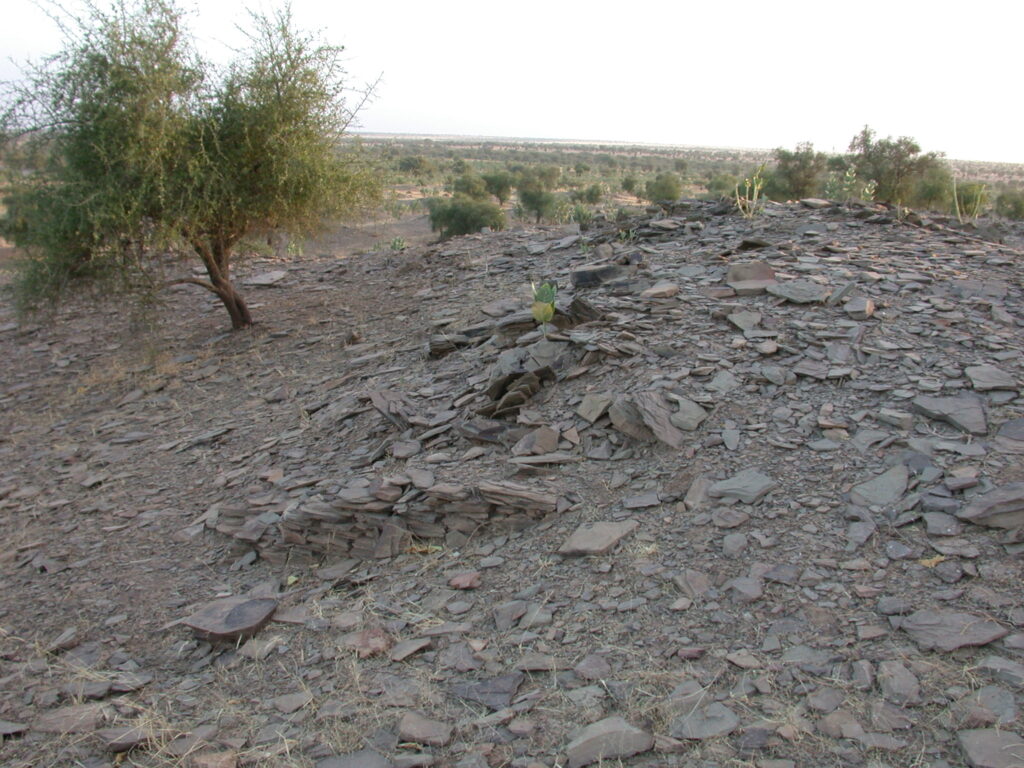



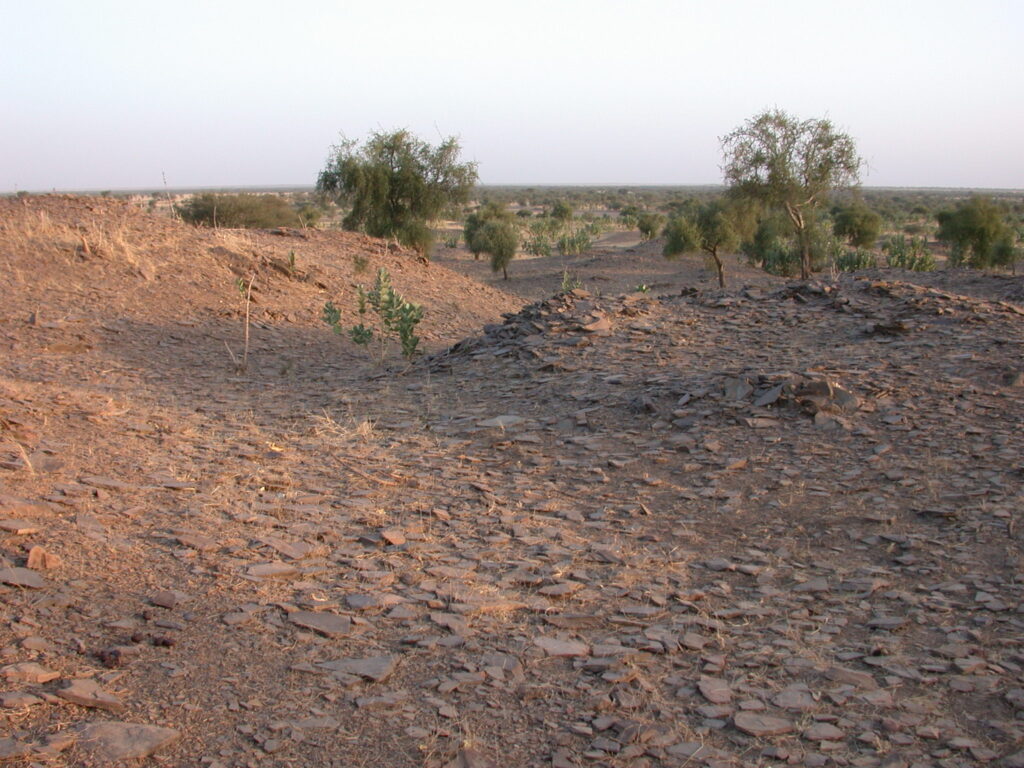

















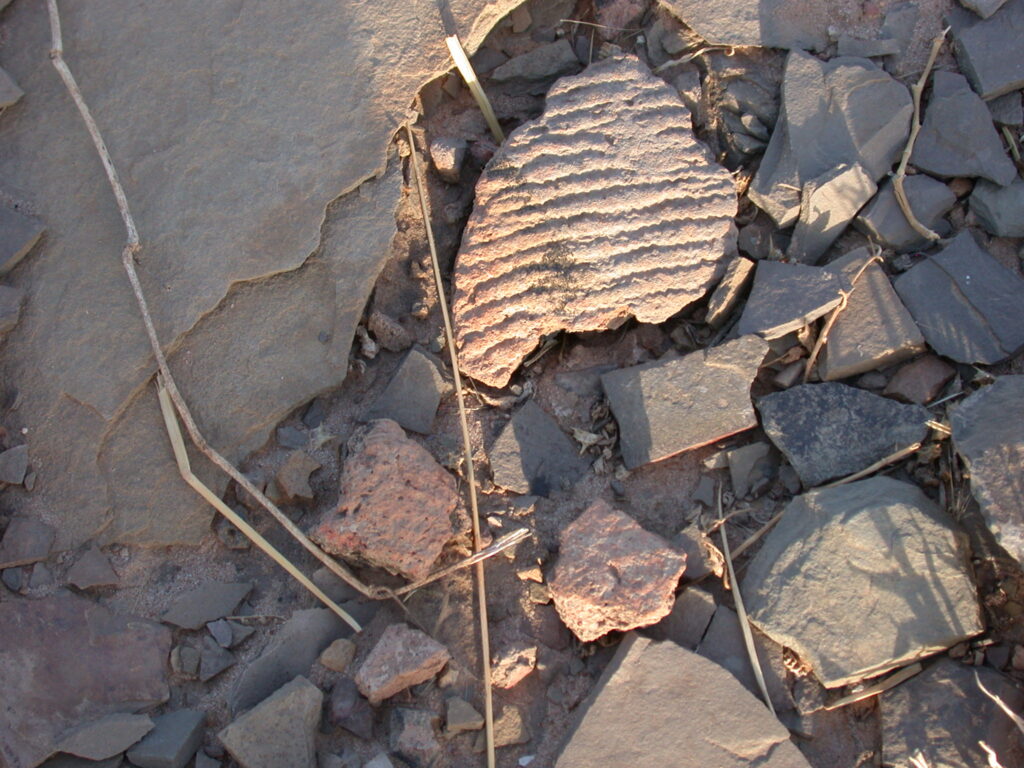














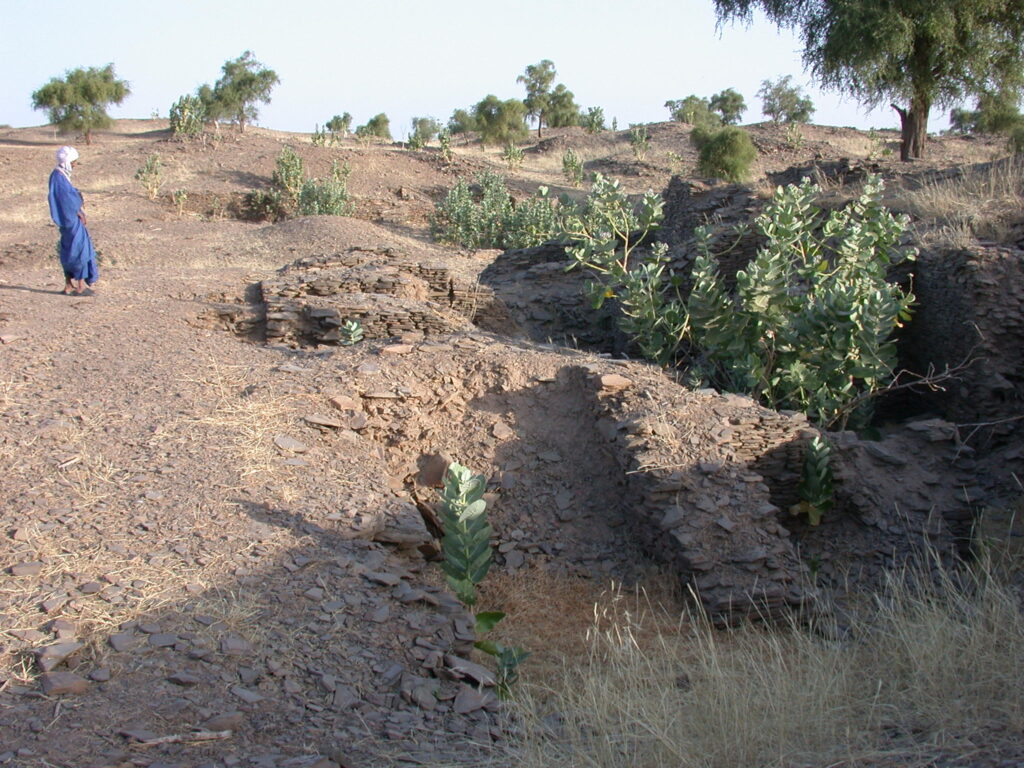











It’s amazing how important the locals like Hassan feel it is to show me the “mosque” at each ancient village, even though I’m pretty sure the Wagadu kingdom wasn’t an Islamic kingdom. The site is vast and I wandered around imagining what it must have been like to ride a horse or walk through the city. I saw what looked like the remains of houses and many pottery shards, although no where near as many as at Aoudaghost. Both sites look like they could use a lot more excavation than what has already happened there so far.
Written November 15, 2007, Bus station in Timbedra, Mauritania
This morning, I woke fairly early and caught a car for Timbedra at the garage in Ayoun el Atrous where all the “luxury” Mercedes taxis picked up passengers, squishing three in front and four in back.




I met a fellow from Dubai in United Arab Emirates on the way to an Islamic school in Nema. He had an iPod with the Koran on it, which he chanted aloud while riding in the car. The driver was fascinated by the iPod. Once I arrrived at Timbedra, I took another car to register with the local police and then to another car depot in Timbedra where I purchased a ticket to ride on an old truck to the ancient city of Koumbi Salah. The driver from the first Timbedra station to the second was a good fellow from Nouakchott, the capital of Mauritania on the west coast. The guys here at this second station were telling him I’d have to spend the night and visit the chief of the town to go to the ancient city of Koumbi Salah. I just want to go there directly and head onward since I am short on time and don’t want to face more involuntarily carnivorous meals or pay lots more cash to guides who don’t seem to know anything.
Written November 16, 2007, Bus station for Oualata in Nema, Mauritania
The trip to Koumbi Salah was bumpy desert and I was quite happy I paid a bit extra to ride in front with the Baba Ahmed, the driver, and one other passenger. The passenger was a pushy 24-year-old who tried to tell me I had to slide over more toward the driver. The only problem was that he was in the better seat by the door and I was already seated diagonally and very close to where the driver had to reach to shift the gears. So, I told the guy that I couldn’t move over, but that if he wanted to switch places, we could do that. That surprised him a bit. After awhile he started with what has become an all-too-familiar anthem here in West Africa: “Donnez-moi un cadeau.” (“Give me a gift.”) Perhaps it’s a cultural difference, but it seems to me that a gift is given, rather than asked for. Finally, he got off the truck. Next, we drove in circles for awhile through a village called Walowo or something like that, two villages before Koumbi Salah, which is apparently where they always got lost. The sunset was beautiful — two of my favorite colors — purple and an almost rose-tinted orange.
After the sunset, I was the only passenger remaining in the truck, so I tried to teach the driver and Sidi Mohammed, his navigator, some French and learn some Hassinaya (the Mauritanian Arabic dialect) from them. Despite my initial feelings of frustration toward the driver for not putting me on the first truck to Koumbi Salah, I eventually started feeling like he, Sidi, and I were becoming friends. In fact, I was a bit attracted to Sidi. We arrived in the dark of night and I ended up sleeping in an earthen shack next to a family’s tent in what they call here the brousse or countryside. They fed me some bassi, small brown couscous with fresh milk directly from a nearby cow (and sometimes, although not this time, some sugar). They loved my head lamp and kept asking to use it and play with it. I had to explain that I needed it for camping in the desert.

I heard drumming and chanting in the distance as I feel asleep totally exhausted around 8:30pm. I woke around 6am to the arrival of a truck. Hassan, the owner of the property, had arrived in the middle of the night and woke up to ask me for 10000 ougiya for the visit to Koumbi Salah and the ride back to Timbedra, although not for staying at his place, he was careful to point out. I figured he just pocketed the money and gave the truck driver the standard amount for the trip.
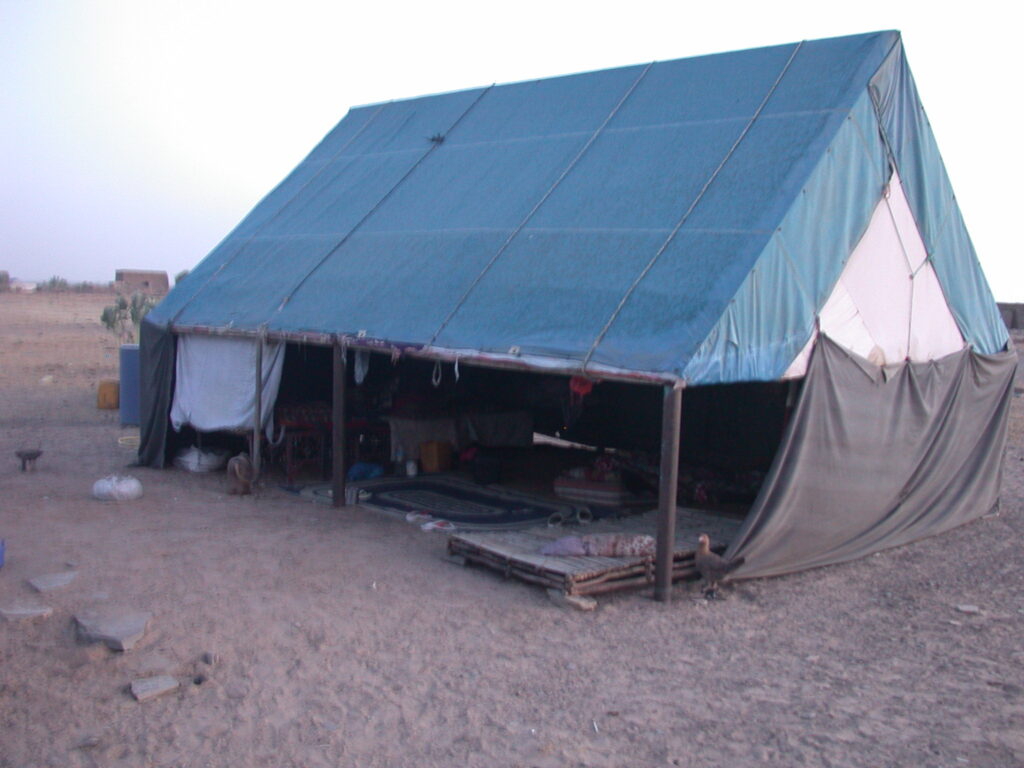



Finally, I arrived back in Ayoun. I promptly got ripped off for another 300 ougiya by a taxi driver who didn’t tell me that I could easily walk to Mohammed’s office near the Hotel Aioun, rather than taking a taxi. I went to visit Mohammed because I had to change money again. He seemed happy to chat with me and we eventually did our business. Then, he fortunately kept chatting with me because an American woman named Sarah stopped by his office. She is with the Peace Corps, stationed in Ayoun for two years after her initial three months of training in another Mauritanian city. Mohammed invited both of us to lunch at his place: couscous with meat prepared by his house boy, plus bottled water and the traditional three pressings of tea. He had the TV on. The houseboy also brought a pitcher of water with a bowl that had a strainer cover with a bar of soap on it, so we could wash our hands before eating. Mohammed had satellite television so we commented about the violence of American television shows and crazy new reality shows like one showing people bungee jumping from a skyscraper. Sarah had to go meet some Peace Corps folks, but after we said our good-byes to Mohammed, she walked me over to the Hotel Aioun. Later that evening, after I handwashed some clothes and was napping at the hotel, Sarah came by with two other Peace Corps volunteers and invited me over for dinner. I accepted and we feasted on some squished Uncle Eddie’s vegan cookies and some Batty (endangered species) dark chocolate with cacao nibs I had brought from San Francisco. We didn’t spoil our appetites for the excellent meal another Peace Corps volunteer named Brooke prepared at Sarah’s place, which was a meeting place for volunteers in the area due to its size and space for visitors to crash. The meal consisted of an amazing salad and pesto pasta. I hadn’t seen so many good fresh vegetables in quite awhile. For dessert, we had ice coffee and freshly baked brownies! We discussed the rioting that had taken place at the food depots around Mauritania after the government raised prices significantly on key foodstuffs. Sadly, the police killed one 18-year-old guy in Timbedra and another person in another town. Apparently, an opposition leader was inciting very young students to throw rocks and riot, and apparently no one was actually going hungry. We conversed about contemporary politics, the role of the Peace Corps and NGOs, my project, and other topics. All in all an excellent evening with the possibility of a reunion with some of the folks at the Festival in the Desert in January, plus some contacts in Nema and the recommendation for the Hotel de l’Amitié in Oualata. After a round of goodbyes, two of the guys walked me back to the hotel.
A few more shots of Aoudaghost to wrap up.




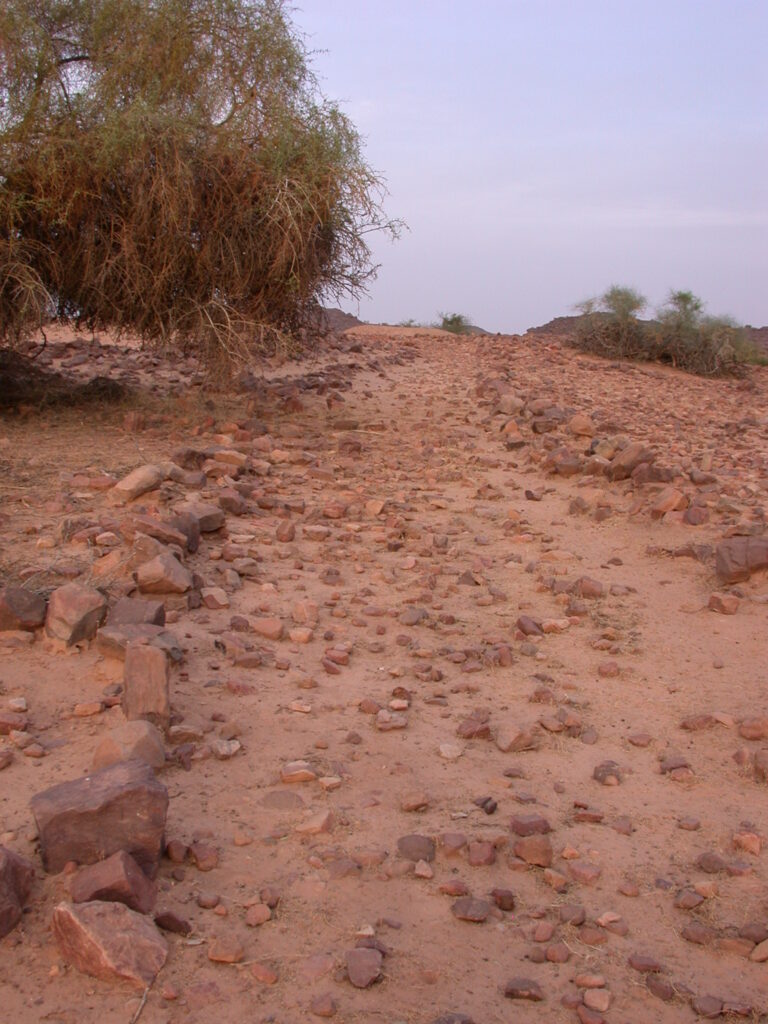

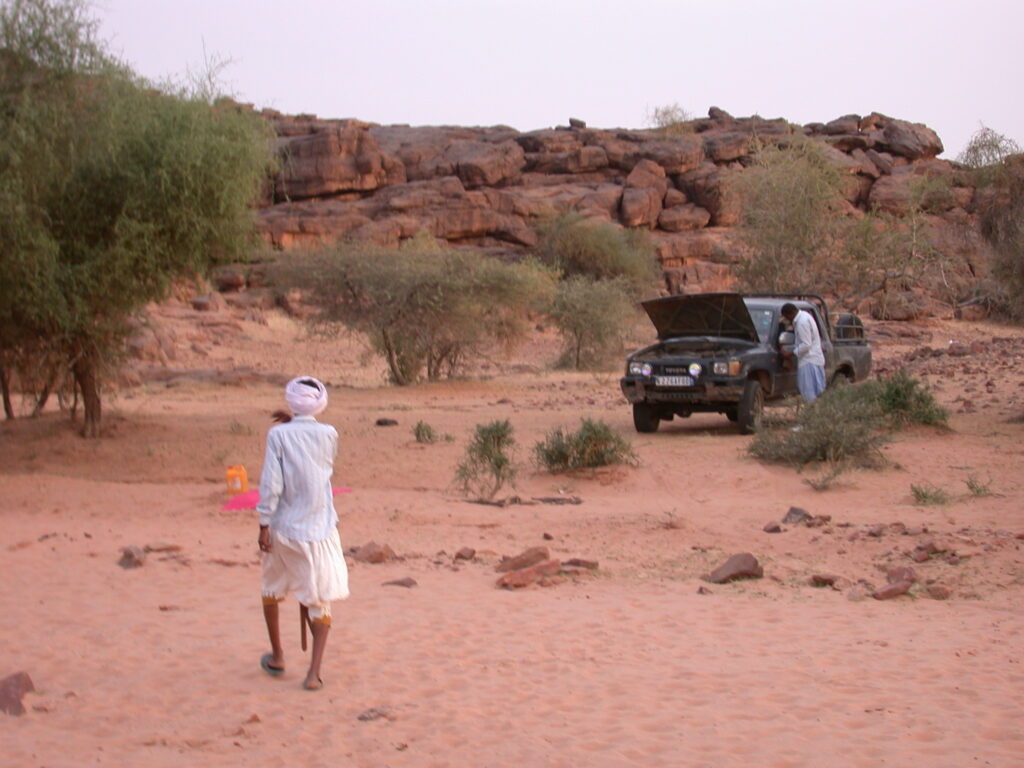
Next we visited a village near the ancient city for tea. They presented us with bowls of cow milk to drink… it wasn’t very fresh and I had trouble drinking all of it. Among the village residents of various ages was an elderly woman who reminded me of Virginia Davidson, a friend who remains part of my inspiration for this whole project.
We drove to another village where the driver led several men in prayer with a nice chanting voice. We again drank bowls of milk, this time so fresh it was still a bit frothy and quite tasty. Then, we drove through the desert back to Tamchekett. The driver invited me to his place for couscous with meat on top even though I had explained about my vegetarianism. Fortunately, the meat wasn’t mixed with the couscous. He offered to open a can of carrots and peas, but I was so sickened by how much I had to pay him t hat I had lost my appetite. He actually had the gall to ask me for a present after I paid him an enormous sum. Because he son was apparently afraid of me, he said I had to stay elsewhere, rather than taking the opportunity to help his son learn about other cultures and people who are different. Also, it was quite late and I’m sure his son would have been asleep any minute.
So, he took me 7km to another village where he left me to stay with a driver who had a truck scheduled to go to the Tamchekket virage the following morning. The driver was really a nice guy as was the owner of the truck who came along for the ride. The bed of the truck was covered by branches and a fiber netting so that cattle could be stored beneath where the baggage was fastened to the truck and where the passengers who couldn’t fit into or pay the higher rate for the closed cabin area of the truck would ride.
I slept on a mattress pad provided by the owner of the truck, in whose home I spent the night. A young woman was wide awake and noisy much of the night playing with a cell phone. So I didn’t get much sleep, but the view of the stars was exquisite. About 5am, the truck drove up and lights shone at me and the owner of the house. We woke up and went to the truck. I had to ride in the truck bed on top of the uncomfortable branches. (Little did I know how luxurious that ride actually was in comparison to at least one later ride to follow.) I was scared that someone could fall off because we were traveling very rapidly through the dark on very bumpy desert roads, along with vegetation like bushes and every so often a tree.

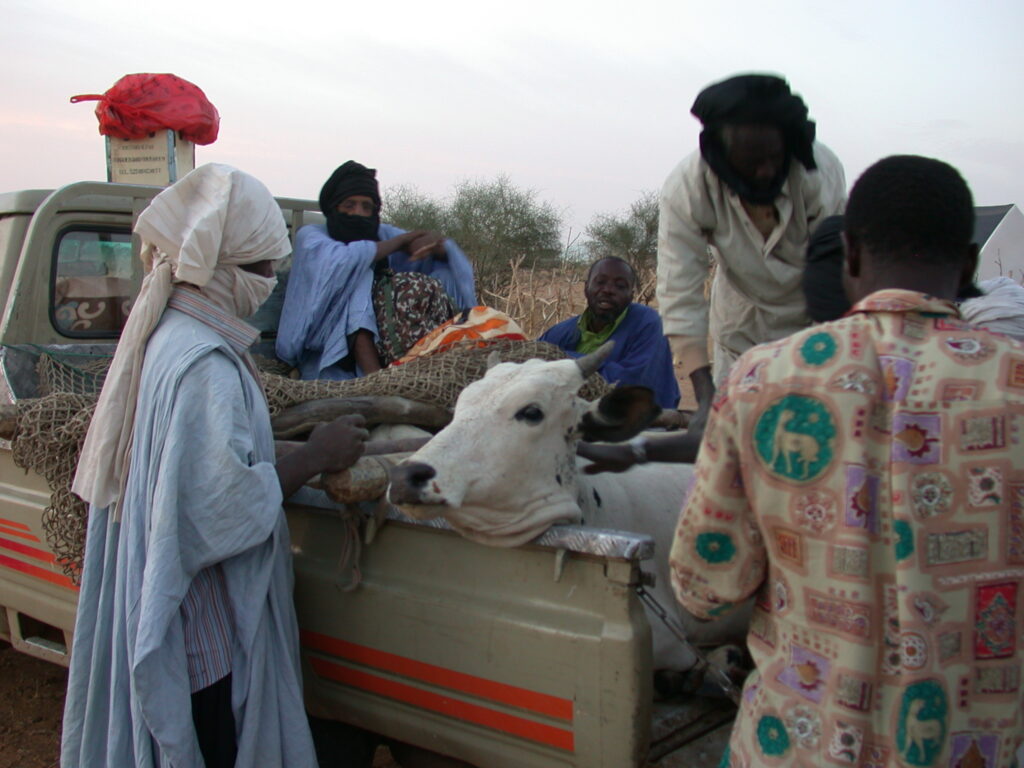

I felt quite bumped, shaken, and bruised by the time we arrived back at the virage. On the way, I discussed with the driver and the vehicle owner how much the other man had given them for me to ride in the truck. They said 3000 ougiya… I told them I paid that man 5000 ougiya for the ride and that they should get the rest of the money from him. They kindly took me along with them past the virage to Tintane, a city on the way back to Ayoun el Atrous. There we stopped first at a cow market to sell the cow that rode in the truck with us, then to the nearby goat market to sell the dozen goats that rode with us.







While the driver and “guide” prayed, I wandered the ruins of the old city. Among rocks tumbled from ancient walls, shards of ancient pottery, and fragments of what looked like forged metal, I imagined the life of the people who apparently occupied this city of the Wagadu (Ghana) kingdom around the 8th to 11th centuries.










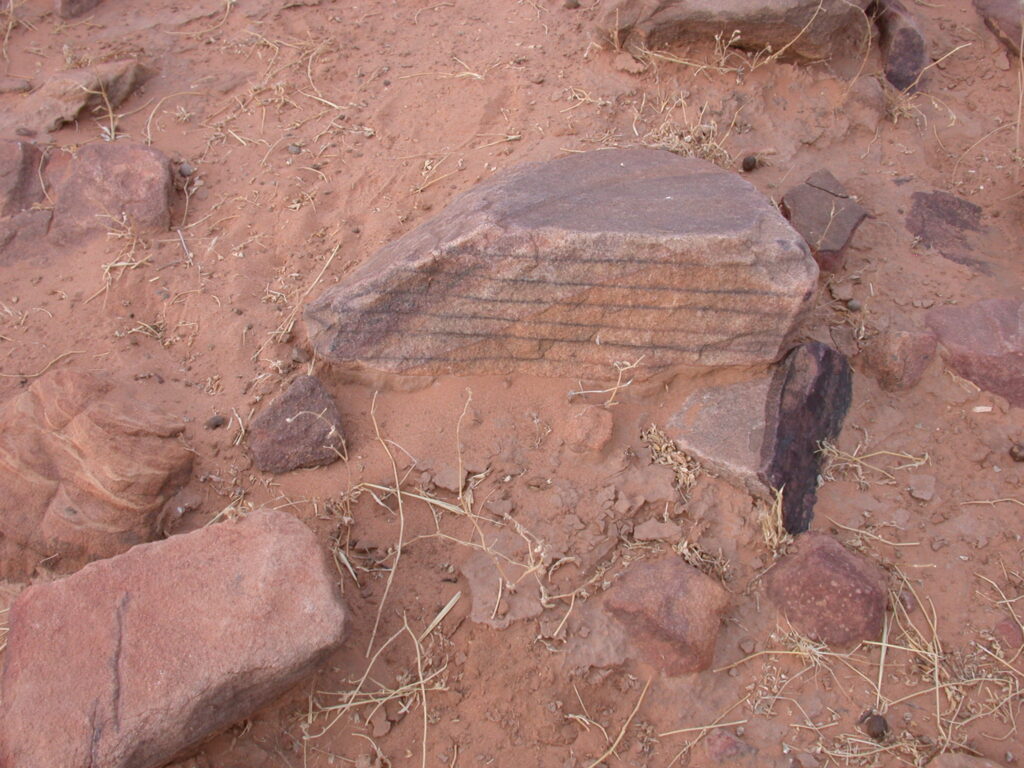



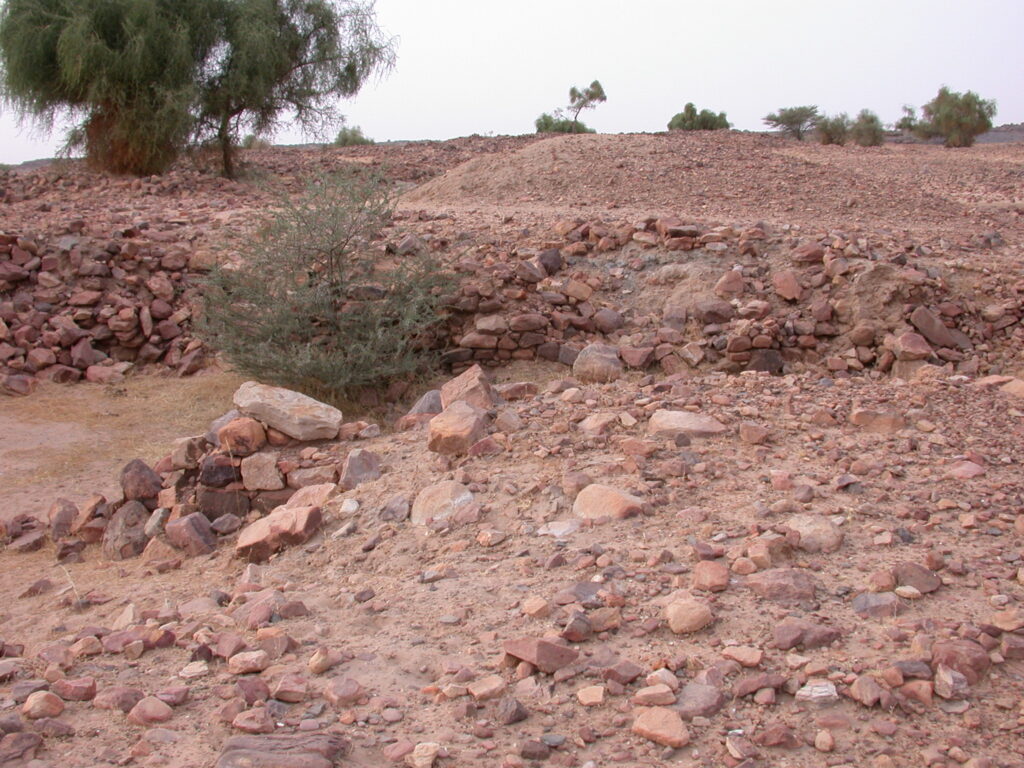
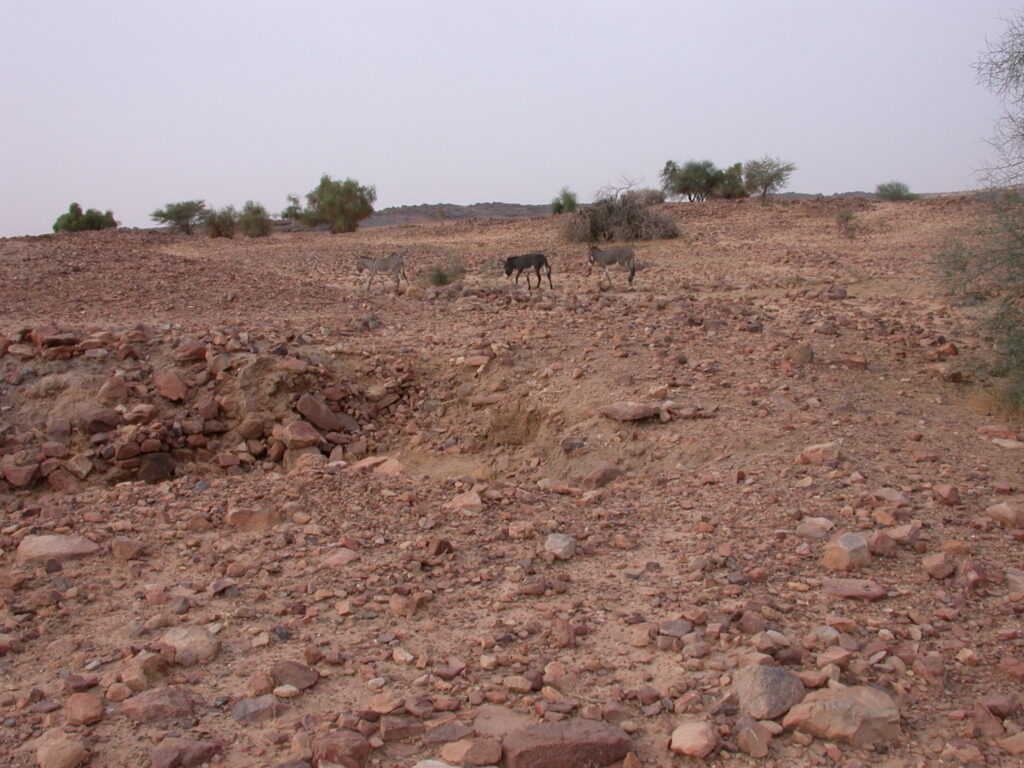
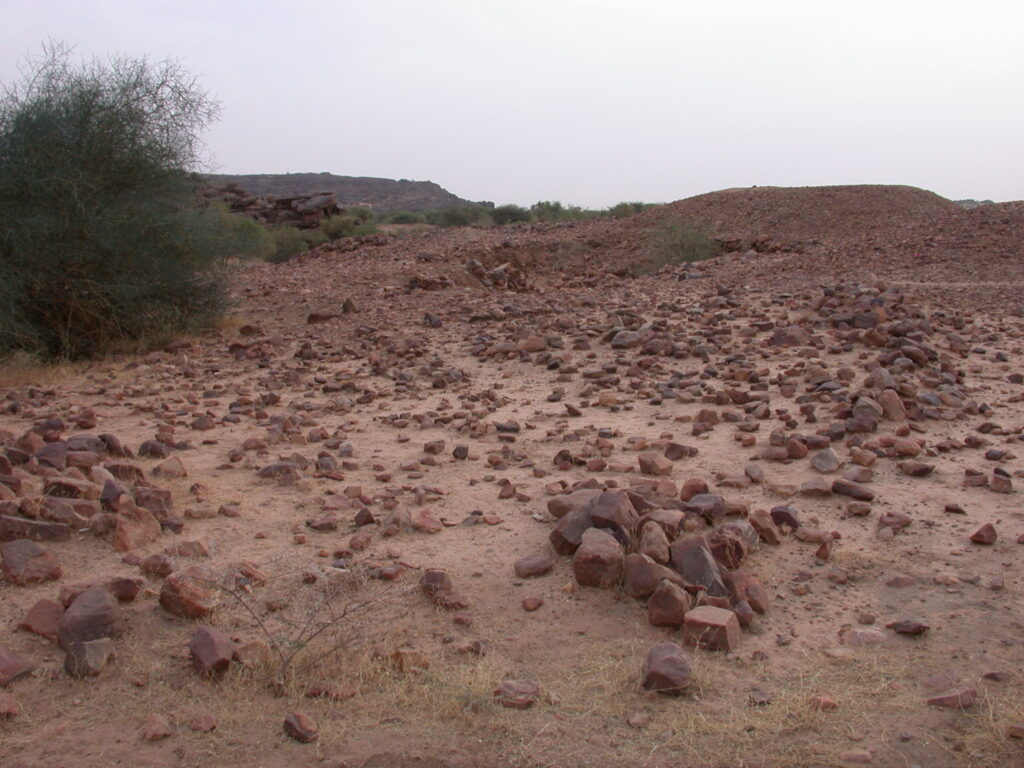






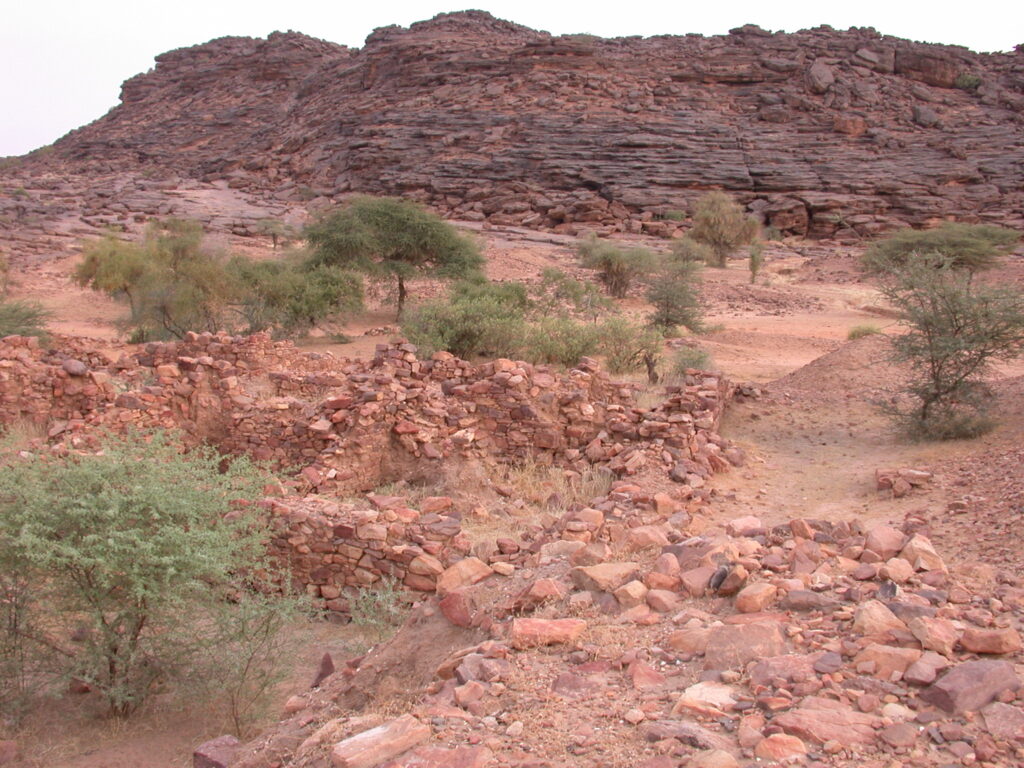










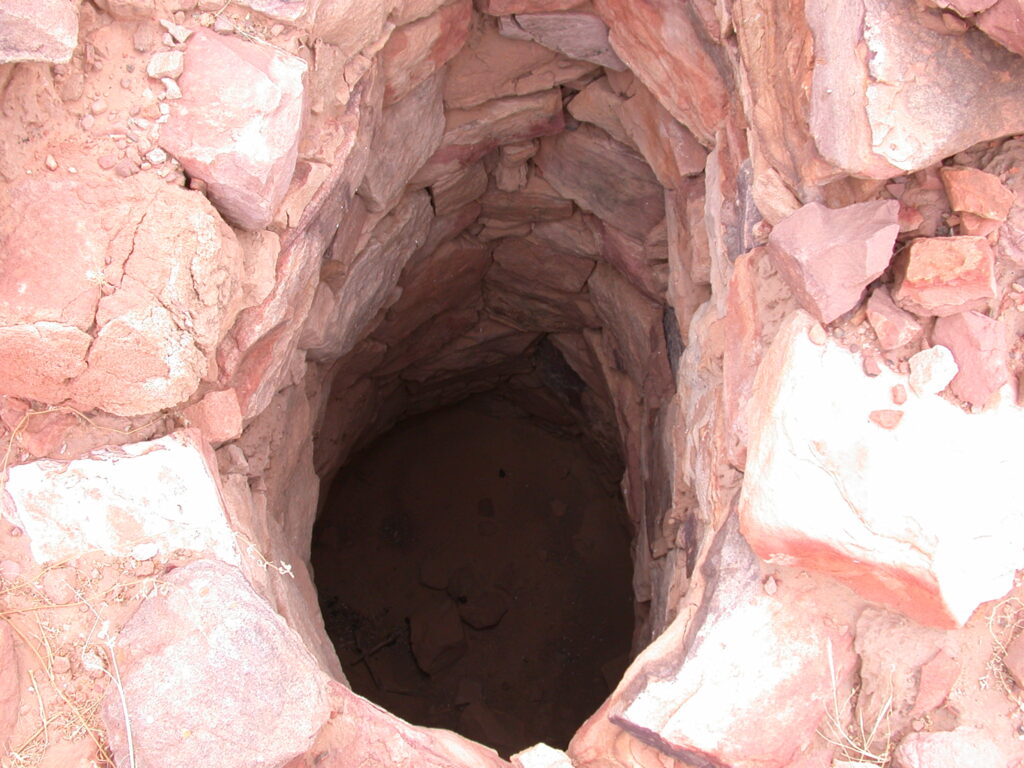





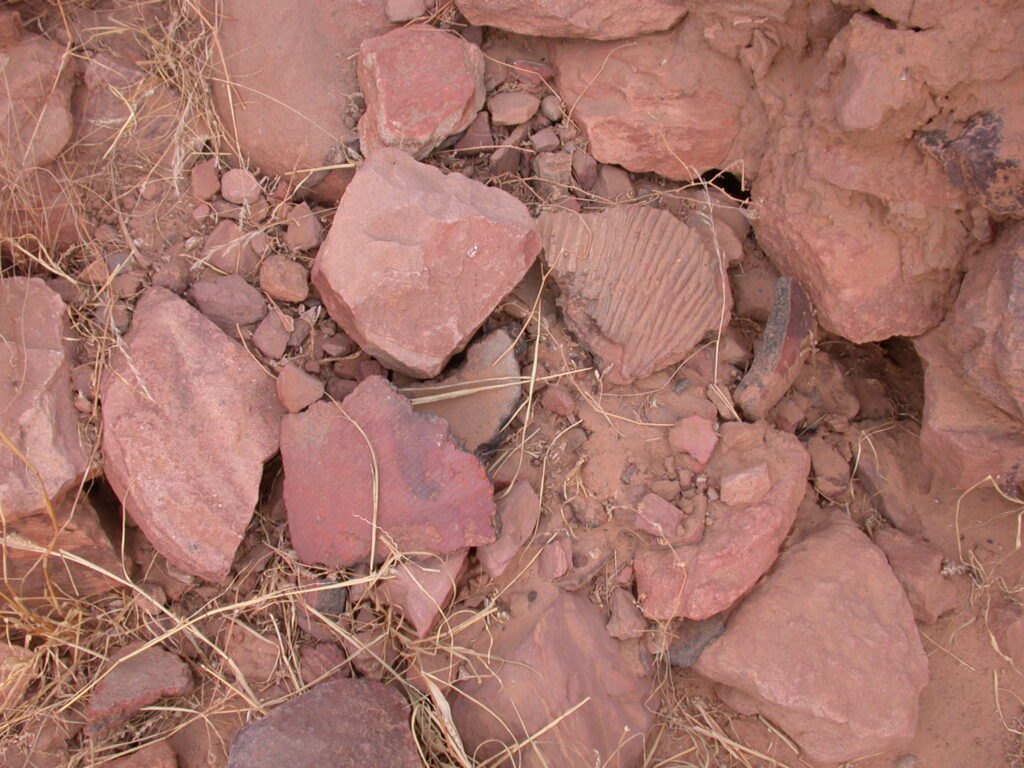








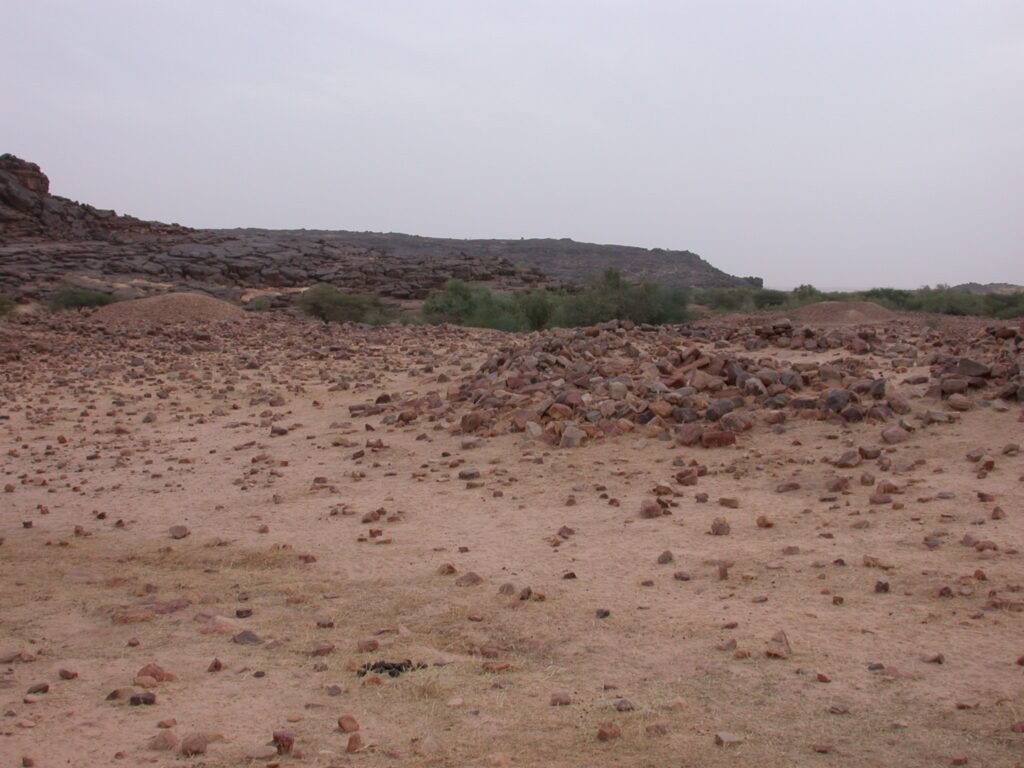


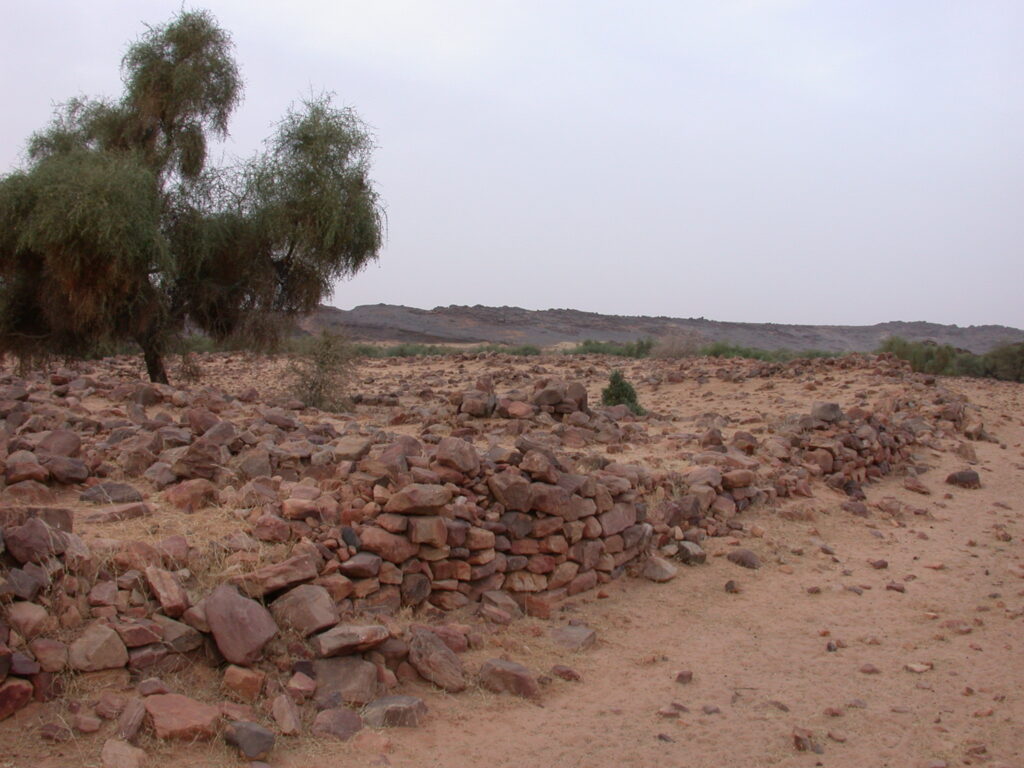













At the virage, I switched to a 4×4 vehicle with a driver who probably already overcharged me for the first ride, but then really took me for a ride by vastly overcharging me for the two-hour ride to the ancient city of Aoudaghost.















The city was beautiful, surrounded by eroded mountains of layered brown stone with caves and also by unusually orange sand dunes, probably due to the presence of lots of iron. The driver let air out of the tires to get more traction in the sand. (That’s a picture above of the guy who overcharged me so much.)



November 15, 2007, Bus station in Ayoun el Atrous, Mauritania
The journey by bus from Bamako to Nioro du Sahel was fairly uneventful. A pleasant elder gentleman sat next to me and we chatted in French much of the way. I also occupied my time by swatting mosquitoes with my map of Mali until the window was so much covered with their bloody carcasses that it became difficult to take pictures free of the evidence of their untimely end. As we left Bamako, the terrain changed gradually from larger trees and bushes to more of a savannah environment, punctuated by the occasional baobab tree and its sister tree, apparently called the mobili.
At this desert outpost called Nioro du Sahel, I and a Mauritanian business woman named Amie changed to a car, actually a Mercedes, into which they packed a total of seven people, three in front and four behind. I felt really squished compared to the bus, even though riding in a luxury car. We went through the border and many police checkpoints, also without incident.

Then, we arrived at Ayoun el Atrous and I stayed the night at the Hotel Aioun after some difficulty in changing money with the taxi driver. I wanted to wait until the next morning to change US dollars to Mauritanian Ougiya at the bank. Well, it turned out that the bank only changes Euros and doesn’t accept dollars or even CFA from neighboring Mali. A number of money changers offered me poor rates of exchange until I found one named Mohammed, an insurance guy, who was really the only one serious about changing dollars. He changed at the rate of 220 ougiya to the dollar, the best rate I could find, but I later found out the official rate if more like 260 ougiya to the dollar.

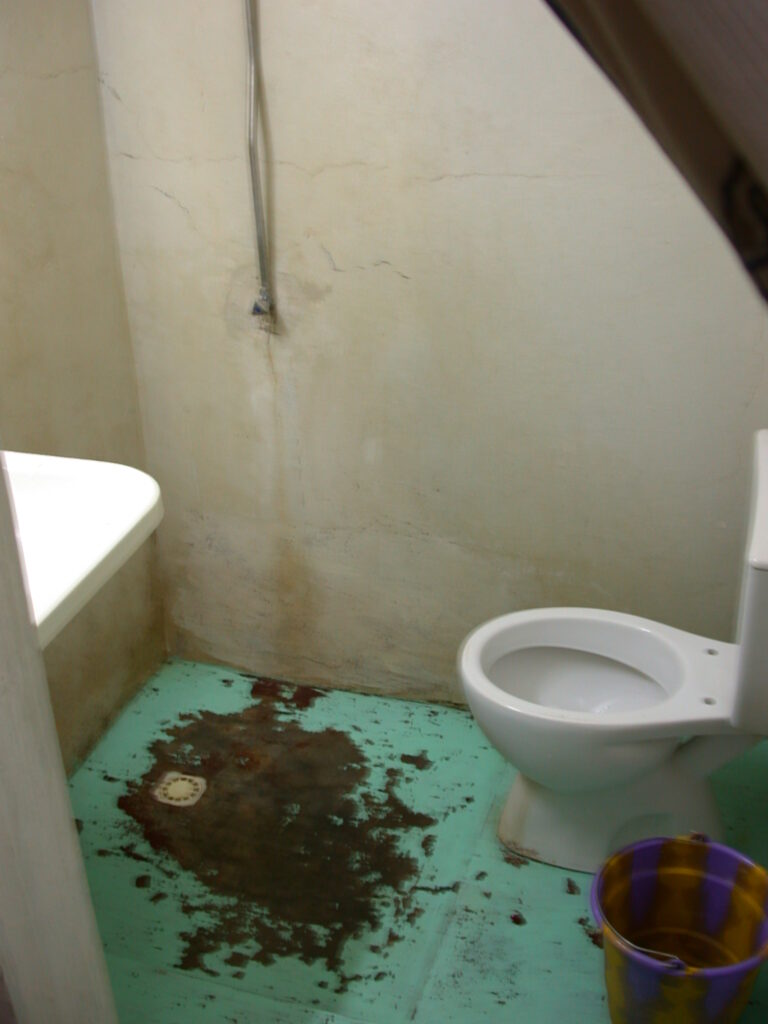


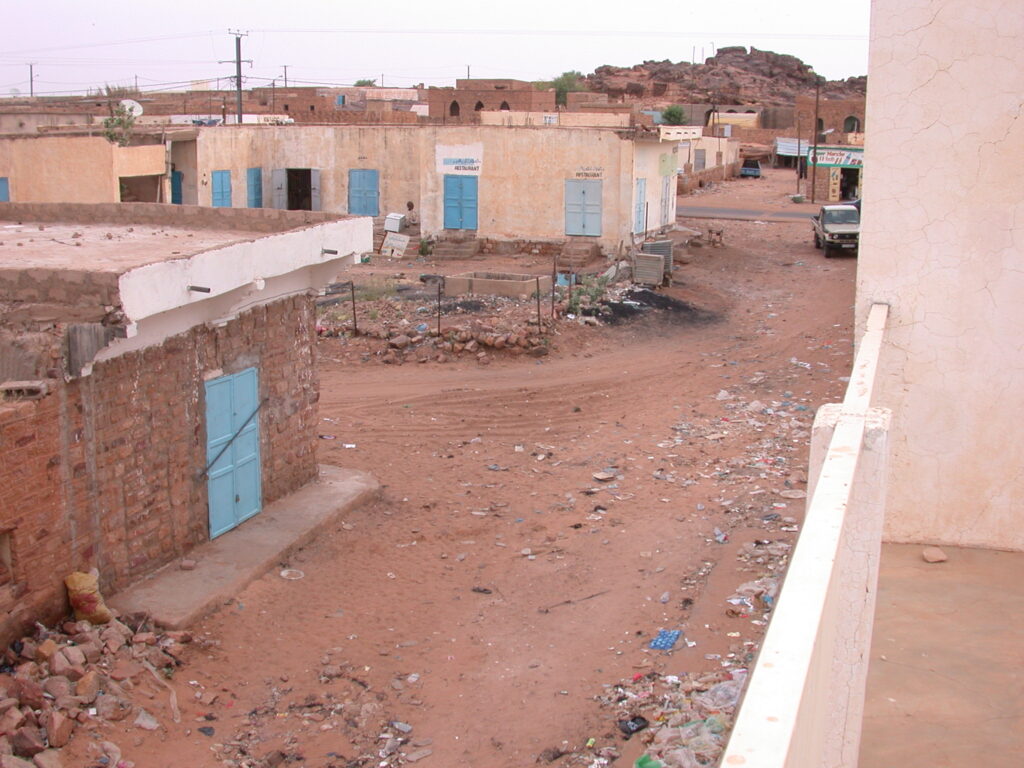

Then, off I went back to the bus station, or garage as they call it here, to find a car for the Tamchekett virage, i.e. the turnout for Tamchekett.






November 12, 2007, Bus from Bamako to Nioro, Mali

A nice elderly fellow on the bus told me the following anecdotes:






A boy boarded the bus with a live chicken in Bamako. Along the way, he got off the bus without taking the chicken. Eventually, the bus driver gave the chicken to a woman he liked working in a stall in a town along the bus route.



I saw lots of baobab trees and spoke with friendly passengers on this bus, Peuls who speak Peular and are Muslims. A Mauritanian woman on the bus who says her name is Amie is also going to Ayoun el Atrous. The voyage is going much more rapidly than I thought it would, inshallah.



That last pic is one of my favorite ones ever… check out what appears in the boy’s eyes!
Watch how the number of baobabs increases further north and the terrain gets drier.


